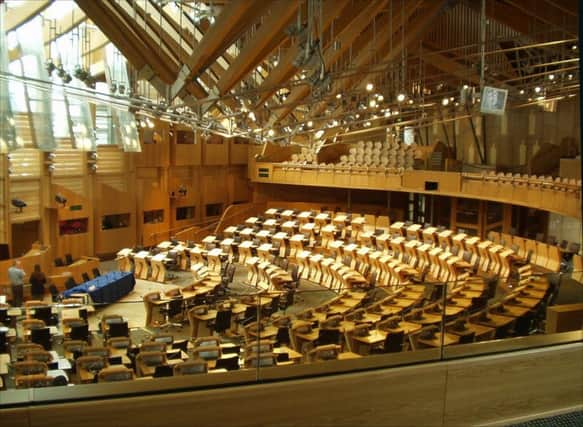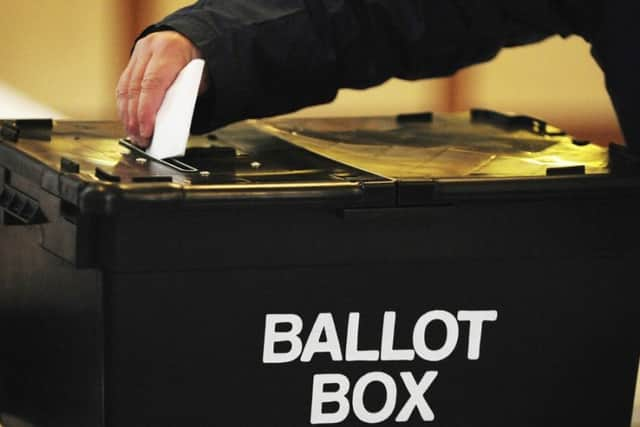The Scottish Parliament electoral system explained
This article contains affiliate links. We may earn a small commission on items purchased through this article, but that does not affect our editorial judgement.


Assuming that you’ve already registered to vote and meet the criteria for doing so (see video), the Additional Member System (AMS) is a straightforward system that ensures a high degree of proportionality between the number of votes cast and the number of seats won.
What is the Additional Member System?
AMS, also known as mixed-member proportional representation, was originally introduced at the unveiling of the Scottish Parliament in 1999 to make it more likely that a coalition would run the country, thus promoting democratic debate. Despite this, the SNP won an overall majority in May 2011 with 69 seats - making it the first party to do so in the history of the Scottish Parliament.


Advertisement
Hide AdAdvertisement
Hide AdThe Additional Member System is made up of two elements - a constituency vote and a regional vote. Each voter has two votes to use, with 129 MSPs to be appointed by the end of the election.
The constituency vote is where the voter chooses their preferred candidate for their constituency. Each candidate for all 73 constituencies in Scotland are elected by a simple majority system known as first-past-the-post (FPTP). The candidate with the highest amount of votes wins, with all other votes counting for nothing.
The regional vote is the second vote, used to elect an ‘additional’ member to the system. Scotland is divided into eight regions, with seven candidates elected from each. Each eligible voter in Scotland is therefore represented by one constituency and seven regional MSPs after the election.


How do the constituency and regional votes differ?
A key difference between the constituency and regional votes is that in the regional selection, voters elect the political party of their choice rather than a named individual (unless named independents are standing for election on the regional list). Political parties compile a list of preferred candidates in order, so that the first seat won goes to their first candidate and so on, as deemed by the number of seats that they win.
The so called d’Hondt system, which allocates the seats in the election, does so by giving seats to parties or independents based on the number of regional votes cast for each entity divided by the number of constituency and regional seats gained in that region, plus one. After this calculation is made, the party with the highest total gains one additional member.
The divisor for the winner is increased by one due to this victory, and the calculation is repeated until all seven of the regional seats are allocated.
It’s worth noting that a candidate can stand for election on both the constituency and regional lists. Should they win their constituency vote, however, their name will be removed from the regional vote so that they cannot be elected twice.
So why do we use a system with two distinct voting practices?
Advertisement
Hide AdAdvertisement
Hide AdAccording to the Scottish Government, “the regional vote is intended to make representation in the Parliament more proportional in relation to share of the vote, taking into account the size of the regional vote for each party (or independent candidate) and the number of constituency seats won by each party (or independent candidate) in that region.”
In addition, smaller parties such as the Scottish Green Party are more likely to achieve political representation with the Additional Member System, as their smaller support base tends not to be well-reflected in FPTP voting systems alone.
If a constituency MSP resigns from their party, they are allowed to continue their role as an independent. A by-election is called if the member resigns from the Parliament, or dies.
If a Regional member resigns from Parliament or dies, no by-election is called. Instead, their seat is automatically handed to the next candidate on the political party’s list. Only if an Independent candidate resigns from Parliament or dies does their seat lay dormant until the next election, as there is no representative to succeed them.
General elections to the Scottish Parliament usually take place on the first Thursday in May every four years. This year’s Scottish Parliament election had been delayed by a year because of last year’s United Kingdom General Election in May 2015.
The right to alter the date of the election is one reserved by the Queen or by a recommendation from the Presiding Officer of the Scottish Parliament. An election date can only be drastically altered by months if two-thirds of MSPs agree to it.
DOWNLOAD THE SCOTSMAN APP ON ITUNES OR GOOGLE PLAY
